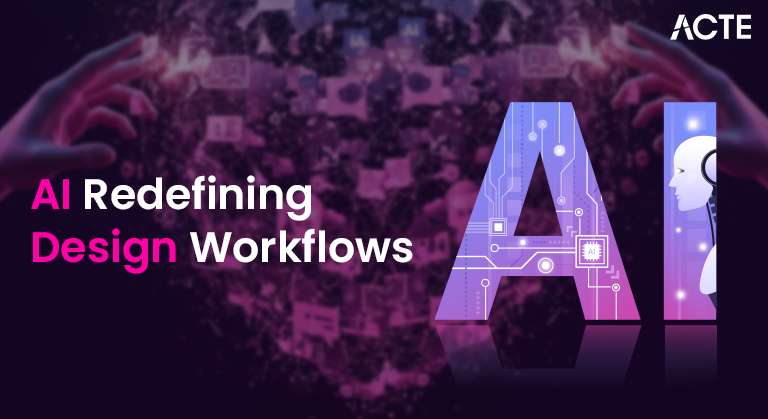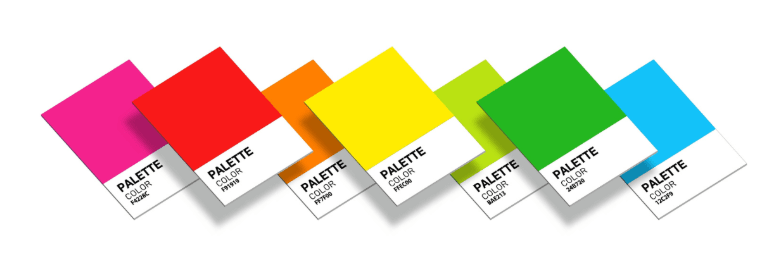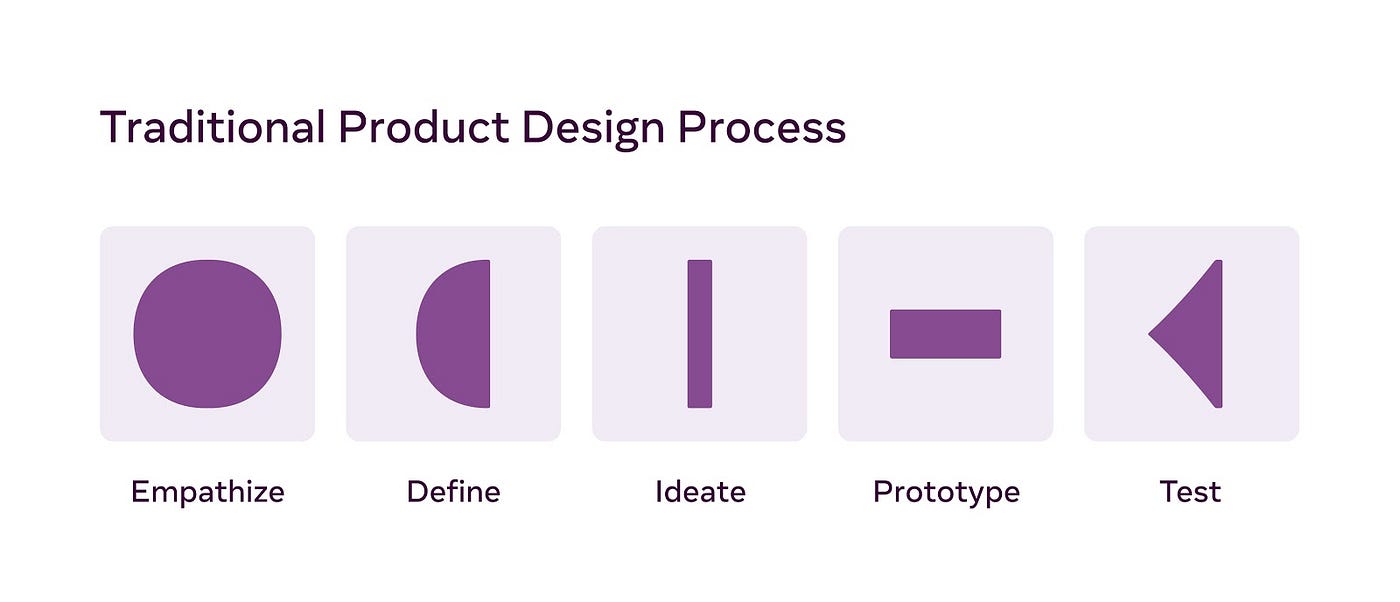
- Introduction
- AI for Graphic Design (Canva AI, Adobe Firefly)
- AI for UI/UX Design
- AI in 3D Modeling and Animation
- AI for Logo and Branding Design
- AI in Color Palette Selection
- AI for Image Enhancement and Editing
- AI-Powered Fonts and Typography Tools
- AI for Motion Graphics and Video Effects
- AI in Web Design and Development
- AI for Product and Industrial Design
- Ethical Concerns in AI-Generated Designs
- Future of AI in Design Industry
- Conclusion
Introduction
The design world is experiencing a powerful transformation with the growing influence of Artificial Intelligence in creative workflows. What was once dependent on manual effort, creative guesswork, and lengthy revisions is now supported by intelligent systems that can learn, analyze, and generate designs with incredible speed and accuracy. AI, combined with insights from Data Science Training, is changing the way designers approach their work, enabling more creativity, better efficiency, and faster results. From graphic design and branding to web design, 3D modeling, and video editing, AI tools are becoming essential in the designer’s toolkit. Platforms such as Canva AI, Adobe Firefly, and Figma provide advanced features like image generation, layout suggestions, and real-time collaboration. These tools not only simplify complex tasks but also allow designers to explore new ideas and styles that were previously difficult to achieve. As AI continues to grow in capability, it is empowering both professionals and beginners to create high-quality, visually engaging content more effectively than ever before.
Eager to Acquire Your Data Science Certification? View The Data Science Course Offered By ACTE Right Now!
AI for Graphic Design (Canva AI, Adobe Firefly)
Artificial Intelligence (AI) is transforming graphic design by automating complex tasks and enhancing creativity. AI-powered tools like Canva AI and Adobe Firefly offer intuitive design capabilities for both professionals and beginners.
- Canva AI: It automates template selection, image enhancement, and layout adjustments, enabling users to create visually appealing designs quickly. Canva’s Magic Write generates text-based content, while Magic Media creates AI-generated images from text prompts.
- Adobe Firefly: Firefly specializes in generating images, patterns, and creative elements from text descriptions. It allows users to experiment with colors, textures, and visual effects using AI-driven recommendations.
These tools simplify design workflows, reduce production time, and empower creators to generate professional-quality graphics effortlessly.
AI for Logo and Branding Design
AI-powered SEO tools automate and enhance various optimization tasks. Some of the most popular tools include:
- AI simplifies logo and branding design by generating custom logos, color palettes, and typography instantly. Tools like Looka, Tailor Brands, and LogoMakr create unique brand identities through AI-powered design engines.
- AI analyzes industry trends, color psychology, and design principles to create impactful logos. It also suggests brand guidelines, including font pairings, iconography, and visual styles.
- Furthermore, AI streamlines branding consistency by ensuring uniformity across business cards, social media assets, marketing materials, and Quality Engineer standards.
AI in Color Palette Selection
AI enhances color palette selection by suggesting complementary, contrasting, and trending color schemes. Tools like Coolors, Khroma, and Adobe Color use AI algorithms to generate harmonious color combinations. AI analyzes emotional associations with colors, recommending palettes that evoke desired feelings and moods. It also offers real-time color suggestions based on design context, ensuring visual consistency. By automating color matching and applying design principles, AI enables designers to create visually appealing and impactful designs efficiently.

AI for Image Enhancement and Editing
- AI-powered tools significantly improve image enhancement and editing. Platforms like Luminar Neo, Topaz Labs, and Fotor use AI to enhance image quality, remove blemishes, and adjust lighting.
- AI automates background removal, object detection, and color correction, making the editing process faster and more precise. It also restores low-resolution images by adding realistic details and textures.
- Additionally, AI-powered image editors streamline batch editing, saving time on repetitive tasks. These tools, often utilized in Data science Training as well, help designers achieve professional-grade image quality effortlessly.
AI-Powered Fonts and Typography Tools
AI enhances typography design by generating custom fonts, adjusting kerning, and recommending font pairings. Tools like Fontjoy, Fontself, and WhatFontIs use AI to analyze text legibility and style compatibility. AI-powered font tools suggest personalized typography combinations based on design context and brand identity. They also automate font scaling and spacing, ensuring consistent readability across different devices. Furthermore, AI creates dynamic and adaptive fonts, allowing designers to personalize text styles in real time, enhancing visual appeal.
Excited to Obtaining Your Data Science Certificate? View The Data Science Training Offered By ACTE Right Now!
AI for Motion Graphics and Video Effects
- AI is transforming motion graphics and video effects by automating complex animations. Tools like Runway ML, Pika Labs, and Synthesia generate realistic visual effects, animations, and transitions from text descriptions.
- AI-powered platforms create cinematic effects by detecting and enhancing motion sequences. They apply real-time rendering techniques, making video production faster and more efficient.
- Moreover, AI automates video stabilization, color grading, and special effects, enabling designers to produce high-quality motion graphics with minimal effort.
AI in Web Design and Development
AI is streamlining web design by automating layout generation, content creation, and UX optimization. Tools like Wix ADI, Durable, and Zyro use AI to build complete websites from scratch. AI analyzes user behavior and design trends to create optimized web layouts. It automates content placement, image selection, and CTA positioning, ensuring visually appealing and functional websites. Furthermore, AI-powered chatbots and recommendation engines enhance user engagement, improving the overall website experience.
Interested in Pursuing Data Science Master’s Program? Enroll For Data Science Master Course Today!
AI for Product and Industrial Design
- AI is making waves in product and industrial design by accelerating prototyping and visualization. Tools like Autodesk Dreamcatcher and Generative Design create optimized product designs by analyzing material properties and usage patterns.
- AI automates 3D modeling, structural optimization, and material selection, reducing design iterations and production time. It also enhances product aesthetics by suggesting ergonomic and visually appealing shapes.
- Additionally, AI streamlines simulation, Performance Testing, and testing processes, ensuring products meet industry standards before manufacturing.
- The future of AI in graphic design looks promising, with continuous advancements in generative models, real-time rendering, and automated design tools. AI will become more adept at creating complex visuals, reducing the need for manual intervention.
- AI-powered Augumented Reality (AR) and Virtual Reality (VR) will enhance interactive design experiences, allowing users to create and experience immersive environments.
- Furthermore, AI will enable hyper-personalization in design, creating tailored visuals based on individual preferences and real-time data. As AI evolves, it will empower designers to focus on creativity, while automating repetitive tasks, driving efficiency and innovation.

Ethical Concerns in AI-Generated Designs
While AI offers immense creative potential, it also raises ethical concerns in design. One major issue is authenticity—AI-generated designs may lack originality, raising questions about intellectual property and artistic ownership. Another concern is data privacy, as AI tools collect and process large amounts of user data for customization. Designers must ensure that user information is handled responsibly. Additionally, AI’s ability to replicate artistic styles may blur the line between inspiration and imitation, potentially leading to copyright infringement. Addressing these ethical challenges is essential to ensure fair and responsible AI usage.
Preparing for a Data Science Job Interview? Check Out Our Blog on Data Science Interview Questions & Answer
Future of AI in Design Industry
Conclusion
Artificial Intelligence is playing a major role in shaping the future of design by providing smarter tools that enhance creativity and productivity. From creating unique logos and custom animations to generating realistic product models and responsive web designs, AI is helping designers do more in less time while maintaining a high standard of quality. These technologies bring new levels of personalization and precision, making design more accessible and impactful across various industries. However, with these advancements come important questions about originality, ownership, the role of Data Science Training, and the responsible use of data. Designers must consider how to balance the benefits of automation with the need for human creativity and ethical responsibility. Looking ahead, the most successful design strategies will be those that combine the power of AI with the imagination and insight of human designers. Rather than replacing creativity, AI will continue to serve as a valuable partner in helping designers bring their ideas to life in new and inspiring ways.


